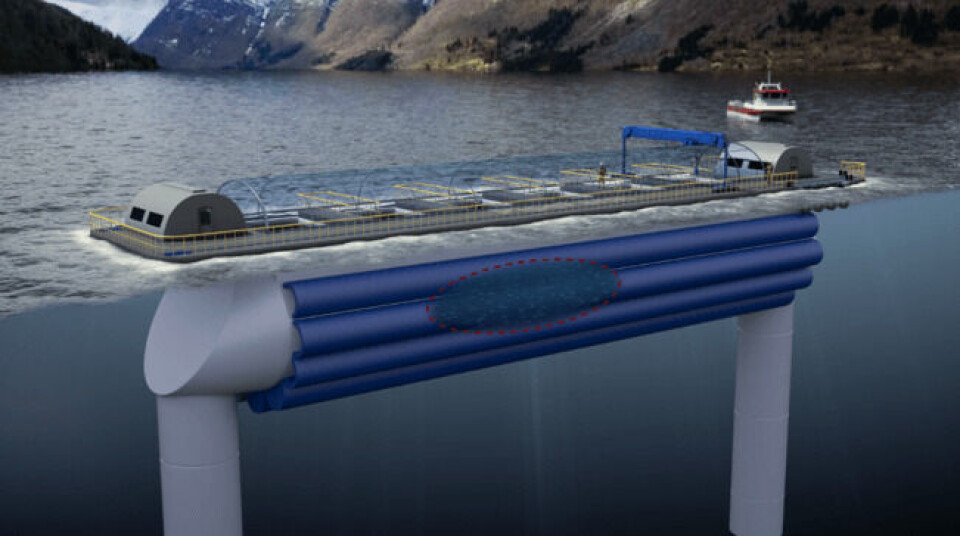
Another farm concept in the pipeline
Lerøy Seafood Group (LSG) has received the green light for its development permit application for its closed "Pipe Farm" concept.
Norway's Fisheries Directorate reported late last week that the concept qualifies for consideration under the country's development licensing scheme.
The fish farmer has applied for nine licences for the Pipe Farm concept, which the company describes as a closed floating longitudinal current plant, reported kyst.no.
The Directorate has stated that based on the information available at the present time it considers that the concept falls within the scheme of development licences. It will proceed with processing the application for the award of one or more development licences.
More information
The Directorate has now asked the company for more information about the concept, and emphasises that this is not a binding commitment.

Stig Nilsen, director of aquaculture in LSG, told kyst.no: "We are obviously pleased that the [Directorate's] research group has come to a positive conclusion in terms of technology and concept in our Pipe Farm application. We will now answer the questions asked by the Directorate of Fisheries and hope that our application can be looked at as soon as possible, with positive results."
More than just scaling up
He added that large-scale production linked to the nine licences that have been applied for is crucial for implementation of the project.
"Our Pipe Farm Concept will be able to demonstrate that innovation in aquaculture can be far more than just scaling up known production methods," added Nilsen.
The costs of the project are estimated at between NOK 650 and 700 million (£65-70m).
LSG owns 50 per cent of Norskott Havbruk AS, the holding company which owns Scottish Sea Farms Ltd. The other half is owned by another Norwegian firm, SalMar.

Many Norwegian fish farmers have developed new farming concepts in a bid to win development licences and increase production. Last week SalMar's Ocean Farm 1, the first concept to make it beyond the drawing board, arrived in Norway after a long journey from a Chinese shipyard, and will soon be stocked with a million 250-gram fish.
And Nordlaks, which came up with the ship-shaped Havfarm design, successfully appealed to the Norwegian Ministry of Food and Fisheries after it was originally granted only ten development permits.
Nordlaks has now been awarded a total of 21 permits to implement Havfarm 1 and 3, with 13 permits attached to Havfarm 1 and eight permits for Havfarm 3.























































